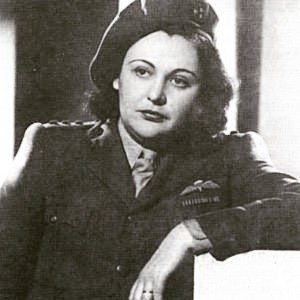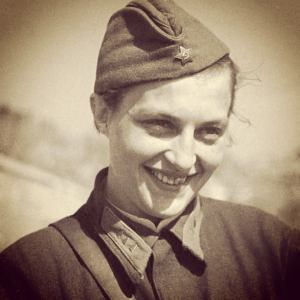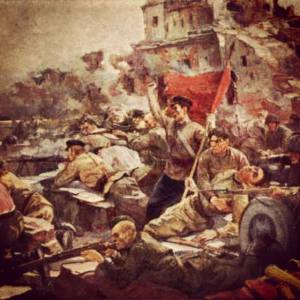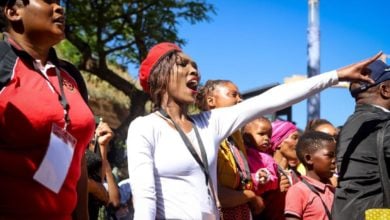
The Gestapos most wanted person
New Zealander Nancy Wake, the “White Mouse,” was public enemy number one in German-occupied France, with a five million-franc bounty on her head.
In the summer of 1940, Wake was living in Marseille when the Nazis invaded. She became a courier in the French Resistance before joining the escape network of Captain Ian Garrow. The Gestapo called her the White Mouse because of her ability to elude capture.
After the German occupation of Vichy in November 1942, Wake subsequently fled to Britain, via Spain, where she joined the Special Operation Executive, formed to conduct espionage, sabotage and reconnaissance in occupied Europe. Over the next year she became “a very good and fast shot” and put many of her male counterparts to shame in training.
When she completed training she was sent back to France to act as a liason between London and the Maquis, rural guerilla bands of French Resistance fighters.
In the early morning hours on April 30, 1944, Wake was parachuted into the Forest of Tronçais. Upon discovering her tangled in a tree Captain Tardivat, head of the local Maquis group, called up to her, “I hope that all the trees in France bear such beautiful fruit this year,” to which Wake replied, “Don’t give me that French s–t.”
Her duties included allocating arms and equipment and recruiting, helping to forge a force of over 7,000 individuals. Up to the liberation of France, Wake and her compatriots attacked the Gestapo headquarters in Montluçon (where she killed a guard with her bare hands), destroyed factories, cut rail lines, killed a German spy among the Maquis ranks and took command of the order of battle when her section leader was killed.
After the war she was awarded the Légion d’Honneur, Croix de Guerre, the George Metal and U.S. Medal of Freedom, among others.

“More than 300 Nazis fell by your gun”
In June of 1941, 24-year-old Ukrainian history student Lyudmila Pavlichenko was one of the first volunteers at the Red Army recruiting office in Kiev when the German and Romanian fascists invaded.
She was given the option to become a nurse but flatly refused it and requested to join the infantry. Being a sharpshooter in a DOSAAF (Volunteer Society for Cooperation with the Army, Aviation, and Fleet) club she was accepted and assigned as a sniper to the Red Army’s 25th Rifle Division on the Southern Front.
With an older bolt-action Mosin-Nagant rifle she took out two German scouts near Odessa, Ukraine. For the next 75 days, in the fighting for Odessa she recorded another 180 kills.
When the Red Army pulled back to Sevastopol, on the Crimean Peninsula, Pavlichenko undertook the riskiest part of a snipers job – counter sniping, where she would engage an enemy sniper for hours, and sometimes days, until her dueler would “make one move to many.” During the Crimean campaign Lieutenant Pavlichenko recorded another 257 kills, including 36 enemy snipers.
Pavlichenko’s popularity soared. Red Army officials wanted her to train new snipers and German propagandists declared over loudspeakers and radio that they would tear her into 309 pieces. This later made her proud: “They know my score (309 confirmed kills),” she would exclaim.
When Pavlichenko was wounded for a fourth time in May 1942 she was pulled from the fighting. She was sent to Canada and the United States for a publicity visit where she became the first Soviet citizen received by a U.S. President, Franklin Delano Roosevelt.
In Washington she was stunned by the ridiculous questions the press put to her. Questions about powder, lipstick, silk and garters on the frontlines and criticism over the length of her uniform skirt (too long by American standards) and its ugly color.
At a rally in Chicago, Pavlichenko called on the West to open its long-delayed second front as the Red Army was facing the lion’s share of Nazi forces. She received a great ovation when she called out, “I am 25-years-old and I have killed 309 fascist occupants by now. Don’t you think, gentlemen, that you have been hiding behind my back for too long?” However, the second front she called for wouldn’t materialize until after two more bloody years when the Red Army already had the Nazis on the run.
On her U.S. tour she spoke out against the racial segregation and gender discrimination in the U.S. armed forces, something that did not exist in the Red Army. U.S. anti-fascist folk musician Woody Guthrie immortalized her trip in his 1946 song, “Miss Pavlichenko.”
Pavlichenko was promoted to Major when she returned to the Soviet Union and also awarded the title Hero of the Soviet Union.
When the war ended Lyudmila Pavlichenko returned to school and later became a historian and research assistant for the Soviet Navy. Pavlichenko died on October 1974 at the age 58.

The symbol of Soviet resistance
At 3:16 AM on June 22, 1941, the Axis powers executed Operation Barbarossa, the code name for Nazi Germany’s invasion of the Soviet Union.
In one of the first battles of Operation Barbarosa, the Germans planned to seize the city of Brest and the Brest Fortress, located on the far west border of Belarus. The fortress was defended by over 9,000 soldiers.
During the first hours of the invasion, German army artillery opened fire on the unprepared fortress. In the city of Brest there was massive panic as shells fell from the sky, inflicting massive casualties on civilians as well as troops. Roughly an hour after the initial shelling, the first German assault on the fortress took place. Soviet defenders were only able to defend isolated strongpoints, the most important of which was Brest Fortress.
Over the next week the Nazis attacked the fort with infantry, panzer tanks and Luftwaffe bombers, slowly taking small parts of the fort. Inside the fort, civilians acted as medics and defenders, while children helped by reloading machine gun belts and sometimes became scouts, relaying enemy movements.
On June 26, Red Army regulars under the command of Major Ivan Zubachyov reached the Fort. Major Zubachyov, along with Political Commissar Yefim Fomin, attempted to pull out of Brest and link up with the rest of the Red Army. After a fierce battle, both Zubachyov and Fomin were captured. Political Commissar Yefim Fomin was immediately shot for being a commissar and a Jew.
When the Germans put Fomin against a wall of the Fort to be shot, he shouted, “Don’t lose your spirit! We will be victorious!”
The official battle ended on June 29. However, deep within the catacombs of the Fort, remnants of the resistance kept fighting for another month. An
unknown defender carved this inscription into the wall: I’m dying but I won’t surrender. Farewell, Motherland. 20.VII.41.
In the end 2,000 Soviets were killed and about 6,800 were captured. The defense of Brest Fortress became a symbol of the fighting spirit of the Soviet people, that they would not go down quietly.
Yefim Fomin was posthumously awarded the Order of Lenin in 1957 and promoted from Regimental Commissar to Divisional Commissar in 1991.






